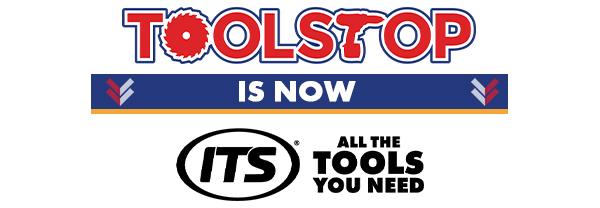Planers
Planers are essential for smoothing and shaping wood with precision. Perfect for professional carpenters and DIY enthusiasts, these tools deliver accurate depth control, efficient material removal, and a clean finish for a variety of woodworking tasks.
Who Uses Planers?
Planers are trusted by woodworking professionals and hobbyists alike, delivering clean, even finishes on a wide range of materials. Whether you're crafting furniture or prepping wooden surfaces, planers offer exceptional versatility and performance.
- Carpenters – Carpenters use planers to create smooth surfaces, trim doors, and shape wood to precise dimensions.
- Furniture Makers – Furniture makers rely on planers to achieve professional-grade finishes and uniform thickness in wood panels.
- DIY Enthusiasts – Homeowners and hobbyists use planers for home improvement projects, from fitting doors to resurfacing tabletops.
- Woodworkers – Woodworkers value planers for their ability to enhance the quality of custom-built projects.
Planers Are Great for Jobs Such As:
- Trimming doors – Easily shave off excess wood for a perfect fit with precision depth adjustment.
- Leveling wood surfaces – Achieve even, smooth surfaces when working with uneven or rough materials.
- Resurfacing old furniture – Restore life to worn wooden furniture with a clean, smooth finish.
- Custom wood shaping – Shape and contour wood to specific measurements for tailored projects.
- Preparing wood for finishing – Remove imperfections and prepare surfaces for staining or painting.
How to Choose the Best Planer
When selecting a planer, understanding key features is essential to match the tool to your projects. From power options to cutting width, choosing the right planer ensures smooth, even results and efficient performance for all your woodworking needs. Here's what to look for:
1. Power Options: Corded vs Cordless
Corded Planers: Offer consistent power, making them ideal for extended use and heavy-duty tasks. They're great for workshop setups but require access to mains power.
Cordless Planers: Provide flexibility and portability, especially useful on job sites or when working on large projects. Modern models boast impressive battery life and power.
2. Cutting Width and Depth
Choose a planer with a cutting width that suits your typical workpieces. A wider cutting width covers more surface area per pass, while adjustable depth control ensures precision for fine or heavy material removal.
3. Blade Types and Quality
Carbide Blades: Durable and long-lasting, these are excellent for frequent use and tough materials.
High-Speed Steel (HSS) Blades: Ideal for smooth finishes on softer woods, these blades are cost-effective but may require more frequent sharpening.
4. Dust Collection Systems
Look for planers with efficient dust extraction ports or built-in dust bags to keep your workspace clean and improve visibility while working. Compatibility with external vacuums can be a big plus for heavy users.
5. Ergonomics and Weight
A well-balanced, lightweight planer reduces user fatigue during extended periods of use. Look for ergonomic handles and controls that make the tool comfortable to hold and operate.
6. Speed and Motor Power
Higher RPMs deliver smoother finishes and faster material removal. Consider the motor's power rating to ensure the planer can handle both softwoods and hardwoods with ease.
7. Safety Features
Safety features like a kickstand to prevent blade contact with surfaces, lock-off switches, and overload protection enhance both user safety and tool longevity.
Popular Accessories for Planers
Pairing your planer with the right accessories can elevate its performance, improve your results, and make every project smoother. From ensuring precise cuts to maintaining a clean workspace, here are three essential accessories for your planer:
1. Replacement Blades
Having a set of high-quality replacement blades on hand ensures consistent cutting performance. Sharp blades help achieve smoother finishes and reduce strain on the motor, prolonging the tool's life.
2. Dust Extraction Systems
A dust extraction system or compatible vacuum adapter keeps your workspace clean and improves visibility during use. This accessory is invaluable for reducing cleanup time and maintaining a safe working environment.
3. Planer Guides
Planer guides help you achieve precise, uniform results by keeping your cuts straight and consistent. They are especially useful for working on larger projects or when edge planing is required.
Frequently Asked Questions
What is a planer used for?
A planer is used to smooth and level wooden surfaces, adjust the thickness of boards, and create precise, even edges. It’s an essential tool for carpentry, joinery, and furniture making.
Should I choose a corded or cordless planer?
Corded planers are better for continuous, heavy-duty tasks as they offer unlimited power. Cordless planers provide greater mobility and convenience, ideal for on-site projects or quick jobs.
What features should I look for in a planer?
Key features include adjustable cutting depth, blade quality, dust extraction capability, and ergonomic design. Look for a model that suits the scale of your projects and offers precise depth control.
How do I maintain my planer?
Regularly clean the planer to remove wood debris and dust. Sharpen or replace blades as needed to ensure optimal performance. Check the motor and power cord for any signs of wear or damage.
Can a planer be used on materials other than wood?
Planers are primarily designed for wood. However, some specialized planers or attachments may allow use on soft materials like plastic. Always check the manufacturer's guidelines for material compatibility.


